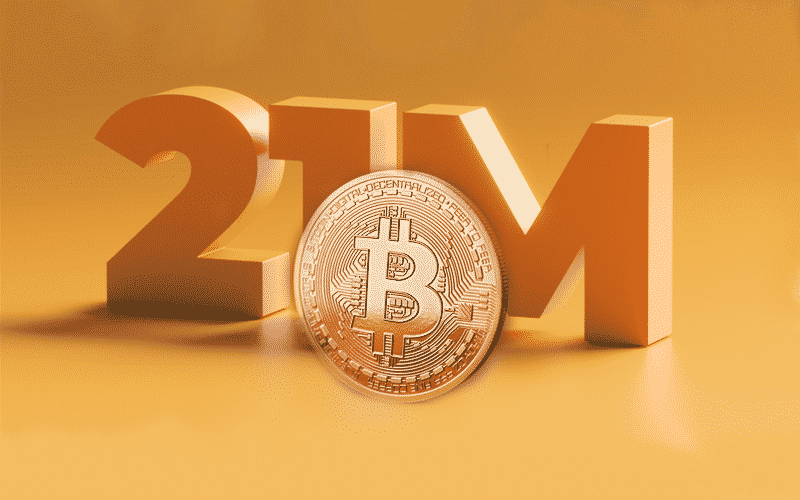While Bitcoin has countless naysayers, the cryptocurrency is a true pioneer and the first of its kind. Although the coin serves a simple purpose, the design mechanics set by the pseudonymous Satoshi Nakamoto were well thought out.
One of the most intriguing aspects is the ‘magic number’ of 21 million, the total sum of BTC that will ever exist.
Although no one is certain this quantity will never change, many have wondered why specifically, this figure. Were 21 Nakamoto’s favorite digits just random, or is there some underlying science?
This article will explore the tokenomics behind Bitcoin, some of the proposed theories for there being 21 million BTC, and what’s likely to happen once we’ve reached this point.
Bitcoin’s tokenomics
Bitcoin uses the proof-of-work (PoW) or mining model in creating new coins. PoW is a popular system in blockchain technology where ‘miners’ solve blocks using advanced computers to decipher numerical hashing functions.
While the difficulty in creating the blocks varies periodically, 6.25 BTC is produced roughly every 10 minutes, equating to 900 BTC daily. An interesting feature of some proof-of-work coins like Bitcoin is the halving mechanism.
Every four years, the supply of Bitcoin is automatically reduced by half. The coin’s most recent halving occurred in May 2020, where 12.5 BTC were previously created per block. This means some time in 2024, the distribution per block will be 3.125.
Approximately 18.9 million BTC are in circulation presently. Although it seems we are nearing 21 million, due to the halving structure gradually decreasing the supply, it’ll only be approximately in the year 2140 where the maximum supply will be reached.
The motivation for having a coin with a finite distribution is easily understandable. When Nakamoto created Bitcoin, they saw the flaws with the traditional financial system of inflationary currencies.
Since governments or central banks can essentially ‘print money out of thin air,’ fiat currencies are seen as less valuable. Conversely, due to Bitcoin’s deflationary nature and scarcity, its value will theoretically never be moderate.
The theories behind choosing 21 million
Of course, there’s no foolproof evidence over exactly why Nakamoto decided on 21 million as the maximum supply, but there are some intriguing arguments over why.
Interestingly, research suggests there was email correspondence sent between Nakamoto and Mike Hearn, a prominent Bitcoin developer, during Bitcoin’s early days. In one of these messages, Satoshi was quoted as writing:
“If Bitcoin remains a small niche, it’ll be worth less per unit than existing currencies. If you imagine it being used for some fraction of world commerce, then there’s only going to be 21 million coins for the whole world, so it would be worth much more per unit.”
Bitcoin enthusiasts have come up with primarily two theories over why Nakamoto specifically chose 21 million.
The M1 money supply theory
One commonly believed speculation relates to the M1 money supply, referring to all the money circulating the globe consisting of physical currencies, demand deposits, checkable deposits, and travelers’ checks.
Before BTC was officially launched in 2009, M1 stood at about $21 trillion. The belief is Nakamoto chose 21 million due to their vision of Bitcoin eventually becoming the global currency.
Let’s consider that you can divide a dollar into 100 cents. This means that, at the time, there would have been around 2 100 trillion money pieces. Similarly, there are 100 million satoshis (the smallest unit of a bitcoin, a 100 millionth of a bitcoin) for each BTC.
Comparatively, the supply will be 2 100 trillion satoshis.
The mathematical model
This theory deals with the extrapolation of Bitcoin’s halvings. Bitcoin’s software is meant to produce 210 000 blocks within each four-year cycle. Even when the rewards are halved, this is the number of mineable blocks that should exist quadrennially.
Before the first halving in 2012, the reward per block was 50. After this year, this was reduced to 25. In 2016, the figure dropped to 12.5; in 2020, it became 6.25. By extrapolating the sum of the block rewards over time, the answer is 100:
50 + 25 + 12.5 + 6.25 + 3.125 + 1.5625 + 0.78125 + … = 100
Finally, if you multiply this figure by 210 000, you come out with 21 million.
What will likely happen after all BTC have been mined?
Needless to say, no one can accurately predict what will happen more than a century from now. Many investors and enthusiasts have also wondered if Bitcoin’s 21 million hard cap can be changed; after all, it’s open-source code software.
The short answer is yes; any technical parameters are modifiable by a large enough group. However, it’s unlikely miners would have a desire to alter the fixed supply for numerous technical and fundamental reasons.
Nonetheless, it’s obvious to assume no new BTC will be created once we’ve reached the hard cap. Many experts imagine that, after this point, the BTC will become like a closed economy of sorts.
So, the Bitcoin network will probably still function, though it may be used to facilitate transaction fees. One of the primary concerns with BTC getting close to the 21 million mark is the reduced mining rewards, considering the high barrier to entry.
The halvings have certainly put a dent into mining profits. However, most miners who still mine nowadays do so because of the transaction costs earned per block. So, it wouldn’t be far-fetched to imagine fees being the primary revenue source for maintaining the network after 2140.
Ultimately, these are only forecasts and not definitive predictions of how Bitcoin may transform if it does reach its maximum supply.
Final word
The point of this article was in appreciating how Satoshi meticulously designed Bitcoin to the finer details, with a forward-thinking outlook into the distant future. One of the most attractive components for cryptocurrencies like Bitcoin is the finite supply.
This critical characteristic is why many refer to BTC as ‘digital gold.’ Like a precious metal, Bitcoin is a scarce commodity that has historically held and even increased in value over time.
BTC was initially conceptualized as a peer-to-peer medium of exchange in the early days. However, if you’re wondering why there continues to be fascination over Bitcoin, the cryptocurrency has also received a reputation of being a store of value, and the 21 million hard cap is one of the reasons why.



